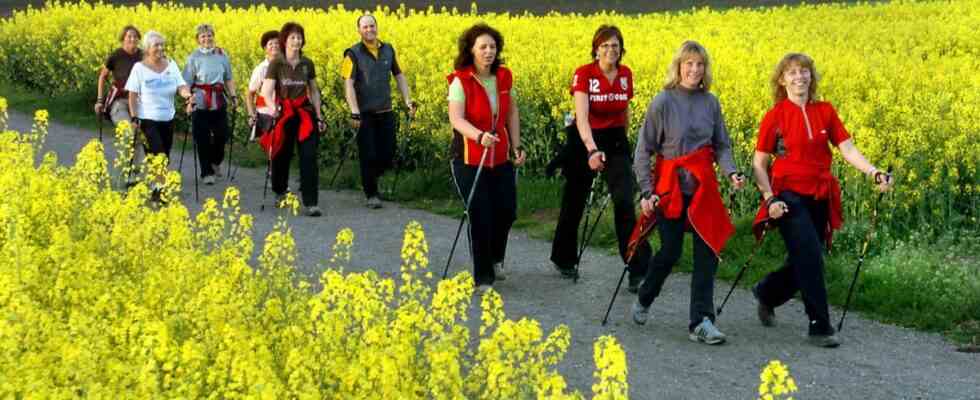The clacking of stick tips is just as familiar a sound in spring and summer in parks and on forest paths as the wheezing of joggers. Nordic walkers are on their way, the common walker knows when the typical sound of the steel spikes comes closer. But do you even need sticks for the more leisurely variant of endurance sports? Isn’t this equipment superfluous or even a hindrance? “It varies from person to person and also depends on mastering the technique,” says Bettina Schaar, professor of sports science at the Bundeswehr University in Neubiberg.
In principle, walking and Nordic walking are considered gentle endurance sports that are also used in the field of health sports under preventive aspects and in rehabilitation. The movements are easy on the joints, the risk of injury is much lower compared to jogging because one foot is always on the ground and there is no flight phase. As a result, compared to jogging, the impact forces are up to two thirds lower, writes Schaar in a brochure about walking and Nordic walking that she published a few years ago at the Cologne Sports University. Schaar makes it clear here: “Walking is not just fast walking and certainly not the so-called competitive walking.” Because walking is carried out without hip rotation, the upper body remains still, and the arms alternately swing to support the movement. “The important thing is the lane width when walking,” emphasizes Schaar. She has stated, “Women often walk in a line, putting one foot directly in front of the other, and it causes hip pain.” If the posture is too bent or too upright, there is a lack of body tension or the shoulders are pulled up, this can lead to back problems.
Bettina Schaar, professor of sports science at the Bundeswehr University in Neubiberg, knows what is important when walking correctly.
(Photo: Claus Schunk)
If you add the poles and try the “Sauvakäveley” from Finland, Nordic Walking, some beginners are initially overwhelmed in terms of coordination. “You quickly notice whether people have experience with poles. Those who have never stood on skis often find it more difficult,” says Schaar. Nordic walking is based on diagonal movements and is similar to cross-country skiing. “It is important that the hand opens when the stick is at the back. Otherwise the torso and neck muscles cramp,” says Schaar. Also, the stick should not be placed too far forward and should be the right length. The following applies: If the upper and lower arm are at right angles, the length of the stick should be around 66 percent of your height.
Schaar has found that with the same load you are about a quarter slower with sticks than without. She counts among the advantages of Nordic walking the training of the leg, arm, shoulder, chest, abdominal and torso muscles, up to 55 percent higher calorie consumption than with walking, the relief of the musculoskeletal system and safety on slippery or slippery surfaces uneven terrain. The prerequisite is, of course, the correct use of poles. The sports scientist does not believe in so-called power walking, i.e. carrying small weights in your hands. “It’s an additional burden on the body, the extra kilos have a contraindicated effect on the joints, especially on the shoulders and elbows,” she says.
With a study in Cologne, Schaar has proven how well walking is suitable for slowly increasing your fitness and ultimately achieving previously unimagined performance in the endurance area. There, after six months of regular walking, a group of beginners switched to interval training, so they alternated walking and running on the training lap. “After a year they’ve been jogging properly, slowly but for a long time,” says Schaar. And after two years they did a half marathon. That’s 21 kilometers after all, and as Schaaf reports, “everyone finished before the road sweeper.”

